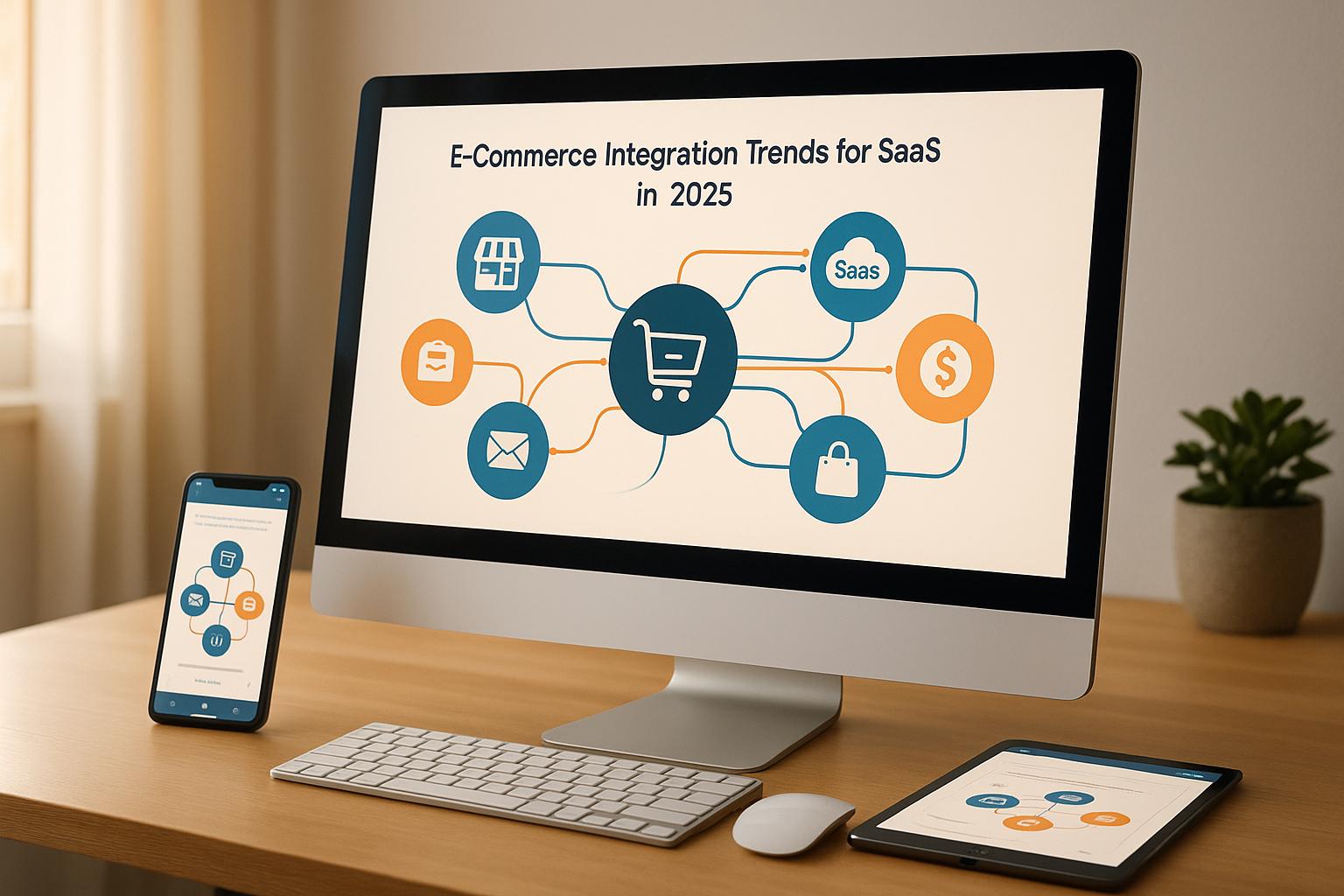CRM systems promise to boost efficiency and sales, yet 65% of CRM projects fail, often due to low adoption, poor data quality, and integration issues. This guide tackles 7 common CRM problems and offers actionable solutions.
Key Problems and Fixes:
- Low User Adoption: Use gamification and automate data entry to simplify usage.
- Bad Data Quality: Leverage AI tools for cleanup and enforce clear data rules.
- Integration Issues: Use API tools and pre-built connectors for seamless integration.
- Manual Tasks Overload: Automate workflows and adopt AI task management.
- Scaling Challenges: Opt for modular or cloud-based CRM systems.
- Unused AI Features: Implement AI for lead scoring and customer analysis.
- Scattered Communication: Centralize communication and auto-log activities.
Why It Matters:
- 43% of users engage with less than half of CRM features.
- Businesses lose $12.9M annually due to poor data quality.
- Automation can save 20% of weekly work hours.
Solve these issues to unlock your CRM's full potential and drive better results. Let’s dive into how you can make it happen.
Master Your CRM Data Quality With These 5 Proven Solutions
Problem 1: Staff Resist Using CRM Systems
Resistance to using CRM systems can negatively affect business outcomes, with companies experiencing 15% lower win rates and 12% lower quota attainment when adoption rates are low. Key reasons for this resistance include concerns about system complexity, fear of increased oversight, and the hassle of manual data entry. For sales teams, in particular, manual data input is a major pain point, with 22% identifying it as their top CRM challenge.
Solution: Game-Based Training Methods
Using gamification techniques can make a big difference in boosting CRM adoption. For example, Salesforce's Trailhead program increased user adoption by 40% and cut support tickets in half. Similarly, Microsoft Dynamics 365's gamification add-on led to a 30% increase in CRM usage among sales teams.
Effective gamification strategies include:
- Rewarding points for completing tasks
- Awarding badges for mastering features
- Organizing team competitions to encourage learning
Solution: Reducing Manual Data Entry
Simplifying or automating data entry can significantly reduce resistance. Two key approaches are:
1. Integration Implementation
Link the CRM system with tools like email platforms, calendars, marketing automation software, and customer support systems. This reduces the need for repetitive manual updates.
2. AI Automation
Leverage AI to handle tasks such as:
- Analyzing email content
- Extracting contact details
- Transcribing meeting notes
- Automating lead scoring
For instance, HubSpot's Gmail integration automatically logs emails and creates contacts, cutting manual entry by up to 50%. Salesforce's Einstein AI helps sales reps save an average of 5 hours per week by automating record updates.
Coca-Cola Enterprises is a great example of this approach in action. By reducing manual entry and maintaining leadership support, they achieved a 50% increase in CRM adoption within six months. This improved adoption aligns with the overall goal of making CRM systems more user-friendly and effective.
These strategies not only address resistance but also help prepare for the next challenge: keeping CRM data accurate and organized by minimizing manual input.
Problem 2: Poor Data Quality and Duplicates
Bad data can be a costly problem. Businesses lose an average of $12.9 million annually due to poor data quality, and 40% of business goals fail because of it . The issue is massive: 91% of CRM data is incomplete, and 70% of it becomes outdated every year . This decline in data quality affects everything - missed sales, weak marketing campaigns, and unhappy customers .
Solution: Using AI for Data Cleanup
AI tools are changing the game for CRM data management by automating the process of finding and fixing data issues. Take Salesforce Einstein AI, for example - it has cut duplicate leads by up to 80% . IBM Watson also delivers impressive results:
- 80% improvement in data quality
- 70% reduction in manual data cleanup efforts
These tools operate behind the scenes to keep data accurate by:
- Spotting and merging duplicate entries
- Standardizing data formats
- Predicting and filling in missing details
- Highlighting outdated or questionable data
However, AI works best when paired with clear data management policies.
Solution: Setting Clear Data Rules
AI can clean up data, but preventing errors starts with clear rules. Microsoft has shown how effective this can be. By enforcing strict data entry standards and providing regular training, they boosted their data quality by 30% . Their approach included:
- Requiring mandatory fields with validation checks
- Regularly scheduled data quality audits
- Tracking shared metrics to measure quality
Experian highlights the value of these efforts, reporting a $5 return for every $1 spent on improving data quality . Better data directly ties back to stronger sales and lead generation, as discussed earlier in the article.
Problem 3: Difficult Tool Integration
Integrating CRM systems with other business tools can be a major headache for companies, draining both time and productivity. On average, employees lose 4.5 hours every week just switching between apps. This constant back-and-forth creates workflow bottlenecks, with 68% of businesses identifying data synchronization as their top CRM integration issue. These inefficiencies only add to the manual workload challenges we'll discuss next.
Solution: Using API Integration Tools
API integration platforms have become a game-changer for connecting different business systems. These platforms ensure smooth data flow across tools, cutting down manual tasks and improving data accuracy. For example, Dell Boomi's platform has been shown to reduce integration development time by up to 65%.
Some key features of effective API integration tools include:
- Real-time data synchronization
- Customizable data mapping
- Built-in error recovery mechanisms
- Strong security compliance
- Scalability to handle growing data needs
To get the most out of these tools, businesses should use API gateways. These gateways help standardize communication, manage API versions, and monitor system performance, ensuring that data flows consistently across all platforms.
Solution: Ready-Made Tool Connectors
Pre-built connectors offer a quicker and simpler way to integrate CRMs with commonly used business tools. Platforms like Salesforce AppExchange provide over 3,000 verified connectors for tools such as Gmail, Slack, and QuickBooks. These pre-built options save time and reduce the technical barriers to implementation.
To make the most of these connectors:
- Focus on critical systems that directly impact revenue and rigorously test their integration.
- Set clear data mapping rules and establish protocols for updates.
Microsoft Dynamics 365 serves as a great example, offering advanced features like:
- Field-level security controls
- Hierarchical access management
- Encrypted data transmission
- Detailed audit logging
When done right, CRM integration can deliver impressive returns. Businesses report an average 321% ROI over three years. This improved efficiency lays the groundwork for the automated workflows we'll discuss next.
sbb-itb-9cd970b
Problem 4: Too Many Manual Tasks
Manual work in CRM systems eats up valuable time, with employees spending 20% of their week just searching for information. These inefficiencies not only slow down productivity but also add new hurdles to sales pipelines while worsening existing integration issues.
Solution: Automated Workflows
Automation in CRM systems simplifies repetitive tasks, turning them into efficient processes. Businesses that adopt automated workflows report 14.5% higher sales productivity and a 10% boost in lead conversion rates. To make automation work effectively, focus on these steps:
- Identify processes that directly impact revenue
- Map out trigger-action sequences
- Continuously monitor and refine performance
Take Houwzer, a real estate brokerage, as an example. By automating lead assignments with Copper CRM, they achieved:
- 80% less time spent on manual tasks
- 60% faster response to leads
- 25% more successful property showings
This automation directly improved their key sales metric: successful property showings.
Solution: AI Task Management
AI takes automation a step further by using advanced intelligence to improve results. With AI, businesses can achieve:
- 30% higher conversions through predictive scoring
- 50% more qualified leads by prioritizing tasks smarter
To implement AI effectively, keep these best practices in mind:
- Ensure your CRM data is clean and accurate (as discussed in Problem 2)
- Start with controlled pilot programs to test AI systems
- Maintain human oversight to guide AI-driven decisions
- Regularly review and optimize AI processes
With a 771% ROI over three years, AI-driven efficiency becomes a game-changer, especially when preparing to tackle the next challenge: CRM systems that struggle to scale with growth.
Problem 5: CRM Systems That Can't Keep Up
As businesses rely more on automation to boost efficiency, outdated CRM systems often become a major obstacle - especially for companies looking to scale. According to research, 47% of users report customization limitations as a major issue. When a CRM system can't grow with your business, it slows down sales processes, reduces team productivity, and creates problems like performance lags, user capacity limits, and poor integration options.
Solution: Modular CRM Systems
Modern CRMs with modular setups allow businesses to expand their capabilities by adding apps or extensions. These platforms come with essential tools and offer the flexibility to include specialized features as needed. This approach ensures that automated workflows remain effective as your business grows.
For instance, Shopify successfully managed 61,000 orders per minute during peak sales thanks to a scalable CRM setup. This highlights the value of systems designed to grow with demand.
Solution: Transition to Cloud-Based CRM
Cloud-based CRMs offer unmatched flexibility and scalability, making them a smart choice for growing businesses. Here’s why they stand out:
- Automatic updates without the need for IT intervention
- Expandable storage to match your growth
- Global access for remote or distributed teams
- Pay-as-you-go pricing for cost efficiency
To adopt a cloud-based CRM effectively:
- Assess current challenges and future growth: Look at where your CRM falls short today and anticipate needs for the next three years.
- Choose a platform with strong APIs: This ensures smooth integration with your existing tools.
- Plan a phased migration: Gradually transition to the cloud while providing training for your team.
This kind of scalability is especially important for tapping into underused AI tools, which we’ll discuss in the next section.
Problem 6: Unused AI Features
Even though advanced systems (as discussed in Problem 5) make room for powerful tools, most businesses aren't fully tapping into the AI capabilities of their CRM platforms. Salesforce research shows that only 37% of sales teams use AI features, despite the fact that these tools can increase sales by up to 50% . This gap highlights a huge missed chance to improve customer relationships and sales performance.
Solution: AI Lead Scoring
AI-driven lead scoring changes how businesses identify and prioritize potential customers. Take IBM’s use of Watson-powered lead scoring as an example - it led to a 35% improvement in lead quality and a 40% boost in conversion rates .
Key steps for implementing AI lead scoring include:
- Ensuring clean CRM data (see Problem 2)
- Defining clear conversion goals
- Monitoring lead quality improvements
Solution: AI Customer Analysis
Modern CRM platforms come equipped with AI tools that help businesses understand customer behavior and predict future actions. According to Aberdeen Group, companies using AI in their CRM systems reported a 38% higher sales win rate and a 32% increase in annual revenue .
Focus on high-impact applications first, such as:
- Churn prediction to reduce customer loss
- Customer segmentation for sharper marketing
- Purchase pattern analysis to drive upsells
- Interaction optimization to improve service
To get the most out of AI-driven customer analysis:
- Start with a specific analysis goal.
- Ensure AI insights are easy to access in daily workflows.
- Use engagement strategies (as discussed in Problem 1) to encourage adoption of AI tools.
For example, Zendesk’s AI system resolves 29% of customer inquiries automatically, requiring no human intervention . This shows how AI can seamlessly integrate into customer service processes.
Problem 7: Scattered Communication
Communication spread across multiple platforms wastes time, creates inconsistent experiences, and leads to missed opportunities. On average, teams lose 4.5 hours each week switching between apps. This disorganization not only reduces the efficiency gains from AI but also worsens the data quality issues mentioned in Problem 2.
Solution: Central Communication Hub
A centralized hub brings all communication channels together, improving collaboration and customer interactions. Businesses that adopt such hubs have seen a 27% boost in customer satisfaction scores.
Here’s how to make it work:
- Integrate key channels: Bring your most-used tools into one platform.
- Create team-specific dashboards: Tailor views for different teams to streamline their workflows.
- Enable real-time collaboration: Allow teams to work together seamlessly, reducing delays.
For success, focus on integrating your top communication tools, set clear guidelines for sharing and organizing information, and use CRM analytics to track adoption and efficiency.
Solution: Auto-Logging Activities
Automated logging tackles the data quality issues from Problem 2 by keeping records accurate and up-to-date. It saves team members 5.5 hours per week by cutting out manual tracking. AI-powered CRMs handle this through features like:
- Call recording with smart transcription: Automatically captures and organizes conversations.
- Meeting note summarization: Turns discussions into clear, concise records.
To ensure success, regularly check the system’s accuracy and confirm that all important data is being logged.
Conclusion: Improving Your CRM's Performance
By applying the strategies discussed earlier, you can turn your CRM into a powerful tool for your business. Leveraging AI automation (Problems 2/4/6), efficient integrations (Problem 3), and user-friendly design (Problem 1) can help overcome challenges and create a system that drives results.
Here are some key steps to focus on:
-
Build a dedicated CRM team to:
- Track performance metrics
- Maintain data quality and integration protocols
- Manage updates and integrations
- Provide ongoing training for users
- Enable mobile access through your cloud-based CRM for flexibility and ease of use.
- Use analytics effectively to adjust and align your CRM with changing business goals.



